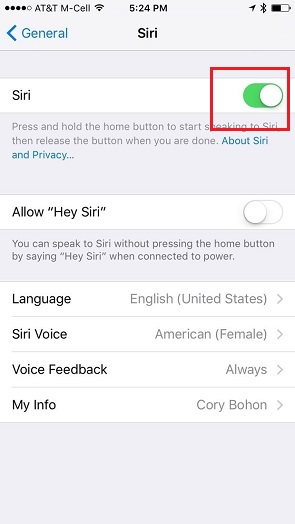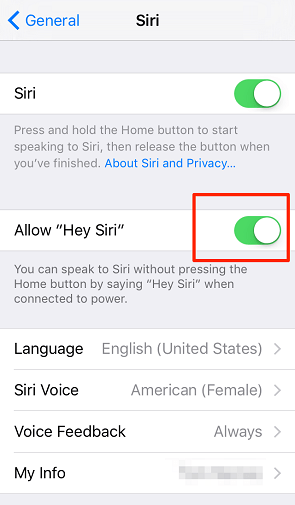5. Encourage the Use of Voice Commands
Using voice commands is fast becoming a powerful and ubiquitous way of interfacing with mobile devices. It is also a great way for seniors to carry out tasks — from sending messages to loved ones, to searching for information more easily.
Apple introduced Siri, its voice-activated virtual assistant, starting with the iPhone 4S. It is also available on third-generation iPads or later. To enable it on compatible devices, go to Settings > General > Siri and set the switch to On.

Once Siri is enabled, pressing and holding the Home key will prompt it to listen for speech input.

The senior can then say natural commands like “Search for health news” or “FaceTime Alex.”
You can also activate Siri by pressing and holding the center button of Apple’s Earpods, or by saying “Hey, Siri” in iOS 8 and later if you have allowed it via Settings > General > Allow “Hey, Siri.”

Many Android manufacturers, including Samsung, have similarly simple-to-use voice-command apps like S Voice preinstalled on their smartphones that are used in the same way.

The Google app is also great at carrying out voice commands, with the added bonus of being compatible with both iOS and Android. To use it, the senior taps the microphone button or says “OK Google,” then speaks the command.

For years now, Google has been steadily implementing voice controls across all its apps.


As voice command functionality continues to spread across web apps, it is good practice to teach seniors to recognize the microphone icon as the universal symbol for activating voice commands.
Share Your Thoughts, Make a Difference
Do you have any thoughts, comments, or stories from working with seniors? Share them by tweeting at us. Want to apply these tips and make a difference? Get involved today and volunteer!


Comments are closed.